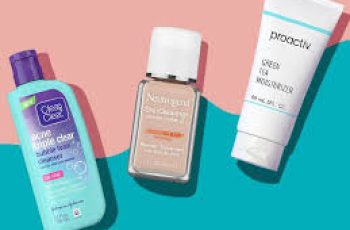
Can I use ferulic acid and niacinamide together in my skincare routine? It’s a common question among skincare lovers and professionals alike.
The short answer is yes, and the benefits are impressive when these two ingredients are combined properly. Antioxidants have become a staple in skincare routines for good reason.
They are powerful protectors that neutralize damage caused by free radicals. Free radicals are unstable molecules triggered by pollution, sun exposure, and other environmental stressors.
Left unchecked, they break down collagen, cause inflammation, and lead to early signs of aging. This is where ingredients like ferulic acid and niacinamide come into play.
Both offer individual benefits and are even more effective when used together. So let’s explore what each of them does and how they complement one another. First, what is ferulic acid?
Ferulic acid is a plant-based antioxidant that’s found naturally in foods like oats, bran, citrus fruits, and apple seeds. In skincare, it helps neutralize free radicals and reduce signs of aging.
It protects the skin’s lipid barrier, keeping it strong, healthy, and better equipped to resist environmental stress.
Regular use of ferulic acid can improve fine lines, sunspots, and hyperpigmentation. It also boosts the skin’s natural defenses, especially against sun damage.
Its standout feature is how well it stabilizes and enhances the performance of other antioxidants. This includes vitamins C, E, and of course, niacinamide.
Ferulic acid is commonly found in serums, masks, and moisturizers. It’s generally safe for all skin types, but sensitive skin users should patch test new products for 24 hours.
This helps avoid irritation, which can happen with any potent active ingredient.
Thanks to modern formulations, ferulic acid is now more stable and easier to tolerate than in earlier skincare products.
Now let’s talk about niacinamide. Also known as vitamin B3, niacinamide is a water-soluble vitamin that works wonders on the skin.
It’s known for its ability to hydrate, brighten, and repair the skin barrier. It functions as a humectant, drawing water into the skin and locking it in.
This results in a plumper, dewier complexion with fewer dry patches and flakes. Niacinamide also helps regulate oil production, making it great for oily, dry, or combination skin types.
It reduces redness, soothes inflammation, and minimizes the appearance of pores. It also fades discoloration, including acne scars and hyperpigmentation.
Best of all, niacinamide is extremely well-tolerated by most skin types.
It plays well with nearly all ingredients and rarely causes irritation, making it an ideal choice for those with sensitive or reactive skin.
You’ll often see it combined with actives like retinol, hyaluronic acid, and acids like glycolic or salicylic.
So now that we’ve looked at both ingredients individually, can ferulic acid and niacinamide be used together? Yes, you can absolutely use ferulic acid and niacinamide in the same skincare routine.
These two antioxidants complement each other beautifully and work in harmony to protect and strengthen your skin.
Ferulic acid boosts the performance of niacinamide, helping it deliver more effective results. It enhances stability and helps prolong the antioxidant benefits on the skin.
When used together, they offer a double layer of defense against pollution, sun exposure, and daily stressors. There are two common ways to incorporate them into your routine.
First, you can layer them together both morning and evening. Apply your ferulic acid serum first, followed by a niacinamide-rich product.
This layering method works well for most skin types and gives full-day protection against free radicals. Alternatively, you can alternate their use.
Apply ferulic acid in the morning to shield your skin from daytime aggressors. Then, use niacinamide in the evening to hydrate and repair your skin while you sleep.
This strategy helps your skin receive the full benefits of each without potential overuse. Whichever method you choose, consistency is key.
Over time, your skin will become brighter, more even-toned, and more resilient. If you’re unsure about layering them, it’s always wise to consult with a dermatologist.
They can guide you based on your specific skin type, concerns, and goals. So what else can you mix with ferulic acid?
Ferulic acid pairs best with other antioxidants like vitamin C, vitamin E, and niacinamide. These combinations are commonly found in high-performance serums.
Ferulic acid also supports the skin’s natural barrier, enhancing its ability to retain moisture and fight off external damage.
It’s particularly helpful when combined with vitamin C, which tends to be unstable and sensitive to light and air. In the past, using vitamin C could cause irritation or degrade quickly.
But ferulic acid stabilizes vitamin C, improving its effectiveness and shelf life. This means you get better results and less chance of skin irritation.
When used with other antioxidants, ferulic acid acts as a booster that strengthens and supports their effects. It helps maintain even skin tone, smooth texture, and youthful elasticity.
And what can niacinamide be combined with? The good news is that niacinamide is one of the most versatile ingredients in skincare. It can be used with virtually every other ingredient without conflict.
This includes retinol, hyaluronic acid, salicylic acid, glycolic acid, and ferulic acid. When used with retinol, niacinamide can reduce irritation and dryness.
Retinol often causes sensitivity when you first begin using it. Niacinamide helps counteract this by improving hydration and barrier function.
This allows the retinol to absorb better and work more effectively. Niacinamide also works well with exfoliating acids. It can help reduce redness and soothe the skin after using glycolic or salicylic acid.
It balances oil production while hydrating and repairing damaged skin. Whether your skin is dry, oily, acne-prone, or aging, niacinamide fits seamlessly into your routine.
Its ability to support and enhance other ingredients makes it a must-have in modern skincare. And now, you know it works beautifully with ferulic acid too.
When combining these ingredients, pay attention to how your skin responds. Always introduce new products slowly and one at a time.
If you’re layering multiple active ingredients, make sure they’re applied in the right order. Thinner serums go first, followed by thicker moisturizers and creams.
Apply sunscreen as your last step during the day. This is crucial when using antioxidant-rich products, which often make the skin more photosensitive.
Protecting your skin from UV damage ensures all your products work as intended. And as always, perform a patch test before trying a new product or combination.
This simple step helps prevent unwanted irritation and gives you confidence in your routine. If you’re unsure about where to start, look for serums that already combine ferulic acid and niacinamide.
These pre-formulated options are designed to deliver balanced, stable benefits. They remove the guesswork and ensure compatibility in one easy step.
In conclusion, ferulic acid and niacinamide are a dynamic duo. Together, they fight free radicals, brighten the skin, improve texture, and reduce signs of aging.
They hydrate, repair, and protect the skin barrier, making your complexion healthier and more resilient.
Whether layered or used at different times, the combination is safe, effective, and backed by science.
And don’t forget, for more skincare tips and advice, you can always connect with one of our experts on Instagram. We share updates, how-tos, and product recommendations daily.
If you’re serious about skincare, you won’t want to miss what’s coming next!


